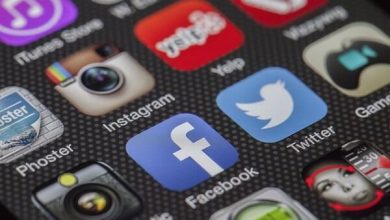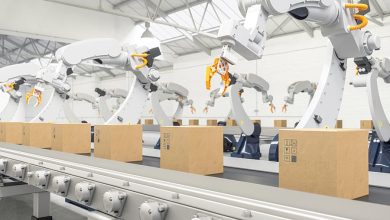How to create a mascot character for a brand

Along with having a logo, many world-renowned companies have brand characters called mascots. A mascot is essentially the mascot of a team, an organization, a company, which draws attention to the company not through a logo, but through a picture and a character. Therefore Turbologo company presents you the material, which will help you to get acquainted with such a branding and will tell you how to create it.
What is a mascot for business?
A British company conducted a study designed to examine how the use of characters affects brand promotion. The researchers analyzed data from British advertising agencies for 2017-2018. It turned out that ads featuring mascots brought companies 30 percent more revenue. They also spur brand promotion in the marketplace – ads with characters are 37% more likely to increase a company’s share.
Just like in sports, in email marketing, one of the main tasks of a brand character is to communicate with the audience. It helps bring a company to life in the eyes of its customers, making it more human and appealing. The character also helps build brand awareness. He makes the idea and concept of the brand more understandable to people.
Why use heroes?
Illustration by Dckydesign_
Brand promotion can go much faster if you communicate with your audience with the help of a mascot. Let’s look at how to use it and what tasks are solved with its help.
- Complex services in accessible words
The mascot allows you to communicate with customers in a more relaxed manner, at ease explaining the intricacies of your product or service offered.
- Branding and characters
In some cases, the mascot will help both to make the brand recognizable and to increase sales. For example, characters are effective for children’s audiences, as well as showing up well in food advertising. But in general, the character can represent absolutely any business – from IT, healthcare, legal services and real estate sales. For example, in the U.S. the favorite of many is the Aflac Duck, representing an insurance company.
- Viral potential
A marketer’s luck is when his mailing goes viral. A bright, charismatic mascot can be the driver of this phenomenon. People will want to share such a newsletter with friends. A memorable image may even inspire them to create parodies and memes. However, this is a double-edged sword, and you’ll be lucky if the memes are harmless.
- Mascot vs. selebrity
Often celebrities act as brand ambassadors: actors, musicians, athletes, famous bloggers. And sometimes real people become mascots for a company or a service.
If we compare the nuances of using a mascot and attracting show business stars and large influencers to advertising, the character has several advantages. First, he fully reflects the mission and values of his company and flexibly adapts to changes in its activities. And secondly, unlike a real person advertising a brand, he will not strike a blow to the company’s reputation with his unflattering actions. But the mascot loses to the stars in fame, and at the initial stage of his life will have to invest in his promotion with the help of advertising.
- Mascots and Omnicanality
Brand promotion online with the use of mascots now goes further than mailing lists, they are added to different communication channels. Mascots are actively communicating with audiences on Facebook, Instagram, VK and other popular platforms. They bring web push to life, making them eye-catching and memorable. By developing a character, make sure they are present in all channels of communication with customers.
- Creating a mascot for the company
Start the work of coming up with a brand character by having a team brainstorming session. Decide what audience he will work for. During the conversation, identify his key characteristics: his mission, demeanor, speech patterns, and appearance.
Types and types of brand personas
Illustration by Carlos Puentes
Characters are divided into two types – real and invented. The first include images of:
- human;
- animal;
- plant;
- animated object, a building, any real-life object.
The advantage of working with a real character is relative simplicity. You have to decide who it will be, and humanize it, adding vivid emotions and a story. For example, at Foxtrot, the mascot is a little fox.
In the case of an invented mascot, we are talking about fantasy creatures, such as:
- alien;
- an imaginary animal;
- a mythical hero.
Creating a completely fictional character requires a flight of fancy and creativity. But you will be fully confident in the uniqueness of your mascot. So, in the company Redmi especially for the series of smartphones Redmi K20 came up with a hero – a funny dragon.
In addition, there are several types of brand characters:
- hero;
- assistant or expert;
- emotion;
- friend;
- antihero.
The character character is a participant in various fascinating stories and funny situations. A striking example of this type is the humanized M&M’s Red and Yellow dragons.
The helper solves the customer’s pain and helps with a specific task. A classic example of this type is the strongman Mr. Muscle, coping with cleaning windows and mopping the floor.
A mascot emotion should evoke a certain feeling in a person. For example, the purple Milka bovine is a symbol of tenderness.
Examples of character-friends are the bunny Quickie (Nesquik), Ronald the Balloon Clown (the hero of McDonald’s), Dino the Dinosaur (Rastischka) and many others.
An interesting type of mascots are antiheroes, which sometimes resonate with the audience as much as positive characters. They are often used to promote brands of cleaning products or drugs, humanizing germs and disease.
- Choosing a character
Analyze your audience, try to identify the key factors that make people buy your product/use your services. What emotions does the product/service evoke in them? For example, if it is confidence in reliability, you can add character traits such as importance, respectability, seriousness, etc. to the mascot.
Highlight your key feature, which can become a superpower of the mascot or its memorable trait. For example, the same Energizer batteries allow the toy rabbit to drum tirelessly, and Nesquik cocoa is so delicious that the bunny’s ears twist with pleasure.
Think about what emotions the character should cause customers, and on that basis, work out his psychological profile. Should he be modern or nostalgic?
Build an emotional connection between the mascot and the audience. For example, the educational platform Lingualeo uses a lion cub for this purpose, which needs to be fed and cared for. All communication with users is conducted on his behalf:
Make up stories with the character that are filled with useful information and humor. And the mascot himself, which evokes a smile, is well remembered, and the information he delivers is easier to perceive.
If your company has corporate colors, use them in the appearance of the mascot.
When selling a wide range of products, it’s worth thinking about creating a character for each of them, based on the age of the audience. A character that is greeted with cheers by kids doesn’t always work well for adults and vice versa.
Conclusion
Creating a brand character requires both imagination, analytical work, and a study of the psychology of the target audience. If you decide to create a company mascot, then come up with several variants of its appearance. Experiment and compare them with each other, and gather focus groups. Choose the one that best reflects the essence of your company and that people like the most. Grow the hero, create his story, which will change together with the life of the brand. An interesting and unique mascot will help you connect with your audience and maintain their loyalty.





